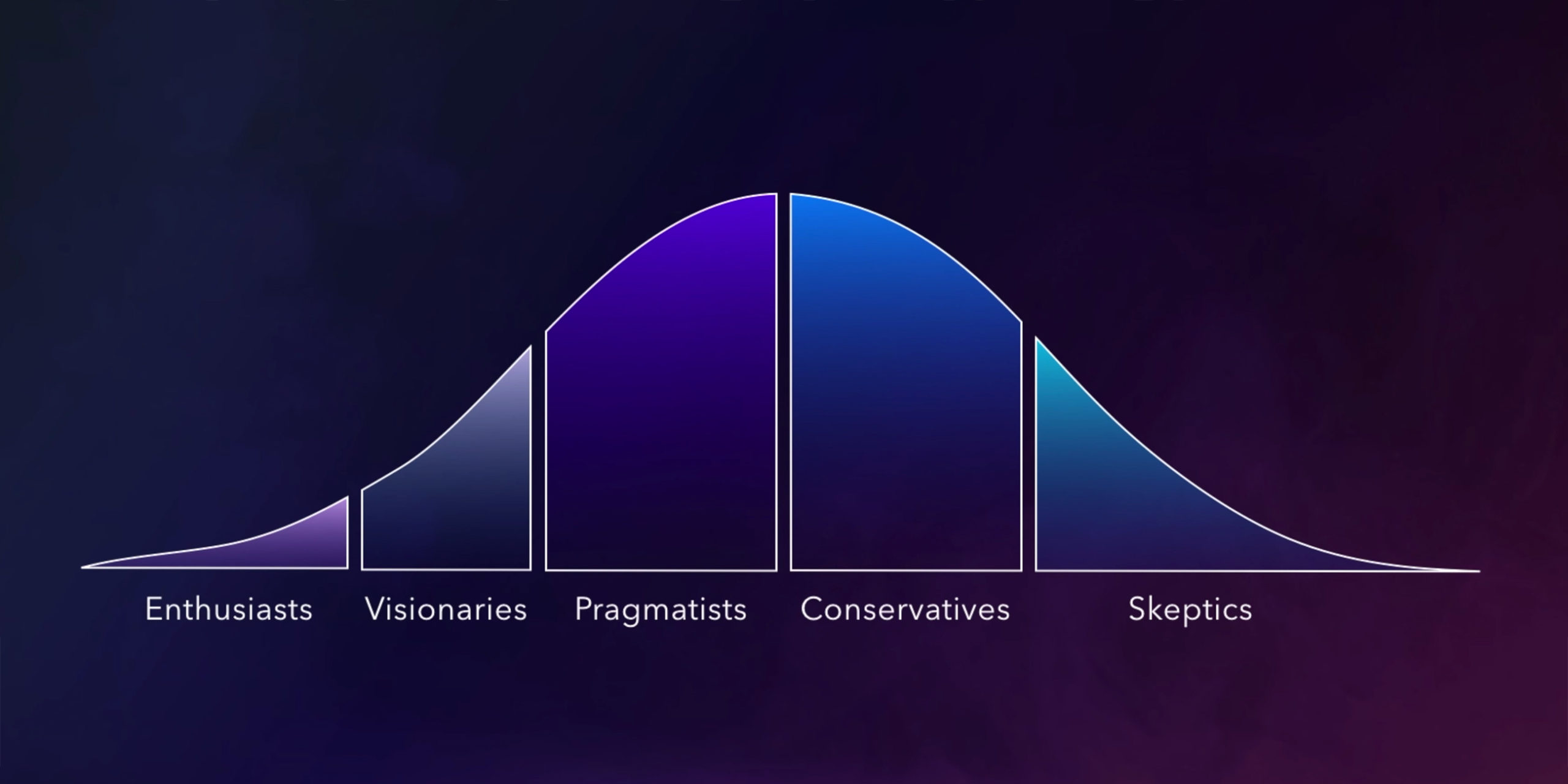There’s no denying we’re living through extraordinary times. Major tradeshows and events have been canceled, blockbuster productions are on hold, and the way audiences consume content may be forever changed.
As our world continues to shift to a new normal, we’ve all quickly become aware of certain vulnerabilities in our business models.
But there’s a growing hope for many in the industry. Even as social distancing has disrupted our workflows, creative teams are rising to the challenge and reinventing themselves.
As soon as news of COVID-19 began to surface, we wanted to find out what it really meant for the 1 million users and 150,000+ video teams we serve. So we turned to our customers to listen to their thoughts and concerns, and better understand how these events are impacting our industry.
What’s really changed?
From individual freelancers to massive enterprises, we sought insight and feedback from the frontline pros at the center of video creation.
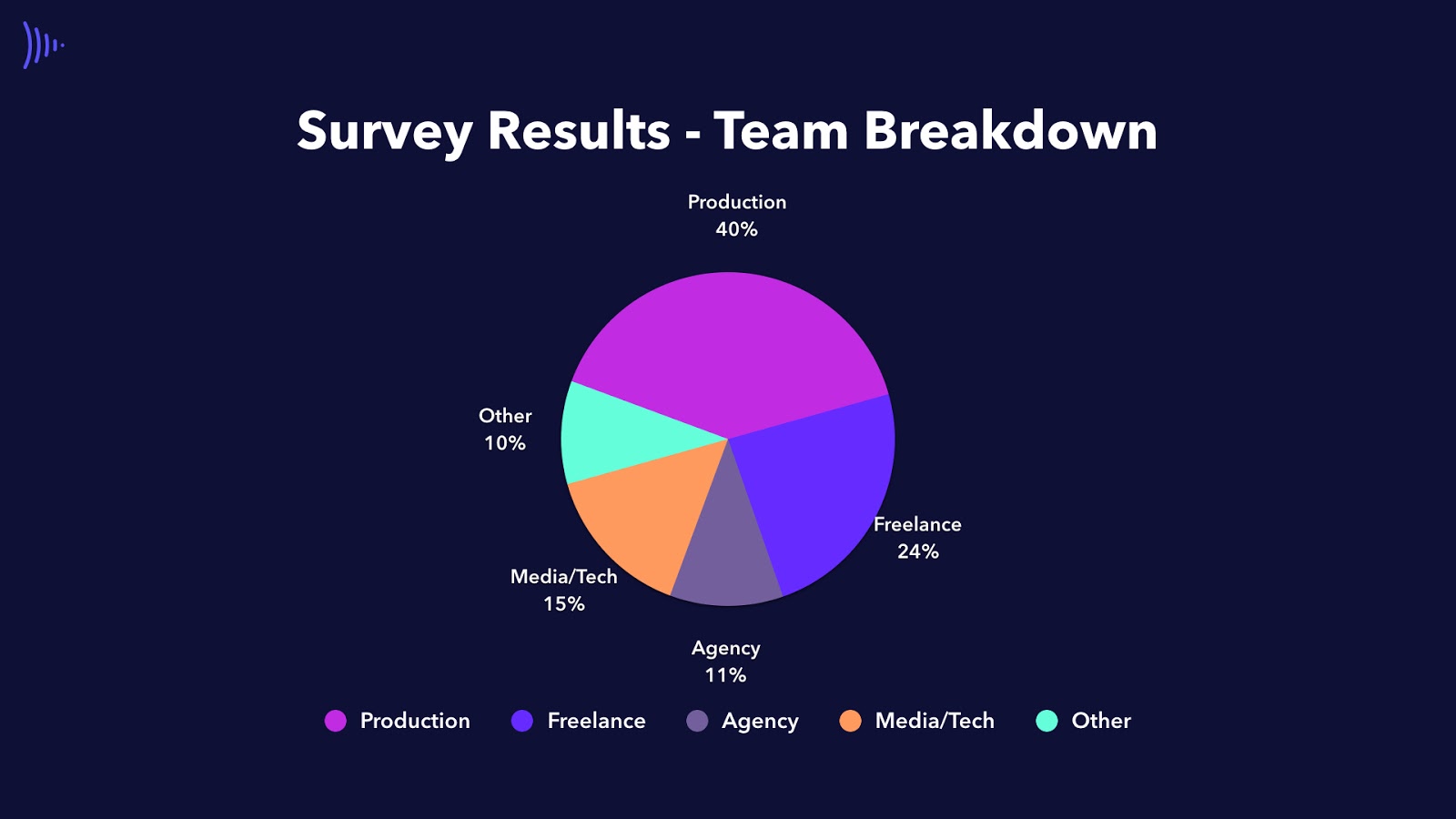
We heard from editors, cinematographers, directors, producers, and myriad other post-production pros. And most of them said the same thing—workloads are shifting.
- 73% have already had projects postponed or canceled—more than 50 % of their current contracts.
- 85% expect even more of their work to be postponed or canceled.
These numbers would be frightening for any industry, and video production is no exception.
But our respondents shared another common sentiment—the industry will have to adapt, and is fundamentally well suited to do so.
Given the sudden rush for creative teams to work from home, many are scrambling to equip themselves for these sorts of remote workflows. As it stands, many don’t feel ready for this transition:
- 40% are not fully equipped with the necessary technology to work remotely.
- 75% expect more difficulty performing their job remotely.
- 80% predict a major reduction in content volume and delay of their current work.
Even though you might expect freelancers and small businesses to take the biggest hit, large teams are reporting systemic challenges, as well.
For enterprise-scale workflows, implementing change can always be a slow process, so responding to rapid change can be even more complex.
But these challenges present an opportunity to rebuild our workflows and businesses to be stronger, faster, and more resilient than ever before.
What others are doing
In the face of reduced work, insufficient tools, and lost productivity, the outlook for the future of video creation is causing feelings of uncertainty.
That’s why we designed our survey to dig deeper, to find the root of this uncertainty.
What we discovered is that video teams are largely focused on a single question: “How do we make the transition to remote work?”
Based on the feedback, there are four main considerations for answering this question: remote project management, remote asset management, socially-distanced community, and adapting to new revenue streams.
Project management
Even though our workflows have changed dramatically since the dawn of TV and cinema, the bulk of large-scale video creation happens in brick-and-mortar studios and offices.
We’re all used to popping down the hall for a question, or gathering teams in conference rooms for regular meetings.
This type of in-person team management has been the norm for so long, that there hasn’t yet been a strong push to implement (or invest in) solutions that enable remote workflows. Well, times have changed.
Now that there is a need, teams who have seldom (or never) considered remote workflows are being forced to examine the possibilities and requirements of keeping their teams running offsite.
It should be no surprise, then, that the top recommendation for solving the remote work question is better project management.
Of teams surveyed, 45% (!) said they don’t use project management software. And this answer wasn’t isolated to just small teams and freelancers, but was peppered across various categories and segments of the data.
If your video team wants to maintain the same level of quality and productivity, a project management tool like Airtable, Asana, Trello, or Monday is absolutely necessary.
Fortunately, project management tools don’t simply need to replicate your existing workflow. They can, in fact, transform and improve it. There are many integrations that connect your project management tools with asset management software. This unlocks the opportunity for even greater efficiency for your remote workflow.
But this leads to the next concern. How does your team access media and project files while out of the office?
Asset management
Video workflows live and die by their ability to smoothly transfer media down the pipeline.
From the camera, to editorial, to color, to VFX, to finishing, to distribution, file handoffs are the core of any healthy video workflow. And for teams quickly transitioning to a remote workflow, there are immediate logistics that need to be addressed.
Just like many of us are used to in-office project management, on-premises file storage is the norm for many video teams. So how are our respondents adjusting?
- 55% will use remote desktop solutions to access on-prem storage.
- 38% will use central cloud storage for asset storage and transfers.
- 17% will mail drives to team members and vendors.
Note: Since many respondents are utilizing multiple asset management solutions, these responses combine to greater than 100%.
First, let’s acknowledge a few things. Mailing drives or using a “sneakernet” is less than ideal for media transfers. Yes, it works in a pinch, but also creates new complications in terms of risks and delays.
A better solution that many respondents are using is remote-desktop software. The advantage of these tools is that they give your team access to your existing on-prem storage, which solves problems for those accessing multi-terabyte arrays.
However, many of the remote desktop tools have noticeable latency, which may impact creative work that requires deep attention to detail. And since these tools merely mimic your existing brick-and-mortar workflow, they may hinder long term adoption of remote workflows.
It’s encouraging, however, to see roughly 40% of respondents turning to pure cloud storage for their remote asset management needs. It’s exactly what we set out to do when we created Frame.io, and we’re happy to see that so many of you are finding that you’re able to centralize your entire team with less demand for bandwidth by leveraging the cloud.
No matter which solution(s) you choose for file transfers and delivery, just keep in mind that creating a solid infrastructure in the short term will make it easier for you to work in the future. And if you’re not sure what solution is best for your team, talk to other creatives who have already adopted them.
This, in turn, brings up the next question for transitioning to remote work. In a world of social distancing, how do creatives build community?
Socially-distanced community
In an industry that thrives on handshakes, personal referrals, and the cross pollination of creative minds, how do we build connections and community while distancing ourselves?
Without networking opportunities, how will creative businesses source work or find collaborators? Beyond that, how will the broader creative community prosper without the real-world interaction that is so critical to artistic discovery?
We’ve heard these concerns echoed from Hollywood to the indie circuit. But already, many creative communities are stepping up to the task.
In response to COVID-19, creative funds have been established, filmmaking challenges have been born, and new online communities are thriving.
But these developments don’t have to be one-off, temporary arrangements. And if our industry wants to transition into the remote era, they can’t be.
Flourishing communities for video professionals to network and join projects already exist, from Blue Collar Post Collective to the editors subreddit. But in light of current events, more communities are needed, as are new ways for these communities to interact.
If we’re stepping bravely into the cloud era of remote work, then it’s important to realize that our creative and business communities are bigger than ever. True cloud-based remote work unlocks talent pools across the globe.
When it comes to transitioning to a remote workflow, encourage your team to find artistic communities and business groups that appeal to their interests and role. It may very well be where you find your next inspiration, collaborators, or clients.
New revenue streams
But while that all sounds encouraging, more than 25% of our respondents voiced concerns about how they’ll pay their bills in the face of several months of a work shortage.
That’s why many creative businesses are already turning to new, previously unexplored revenue streams. Of our respondents, 57% are already pivoting to compensate for a slowdown in their typical client work
New activities ranged from creating educational content, to focusing on animation or VFX, to selling stock assets or templates, to producing virtual events.
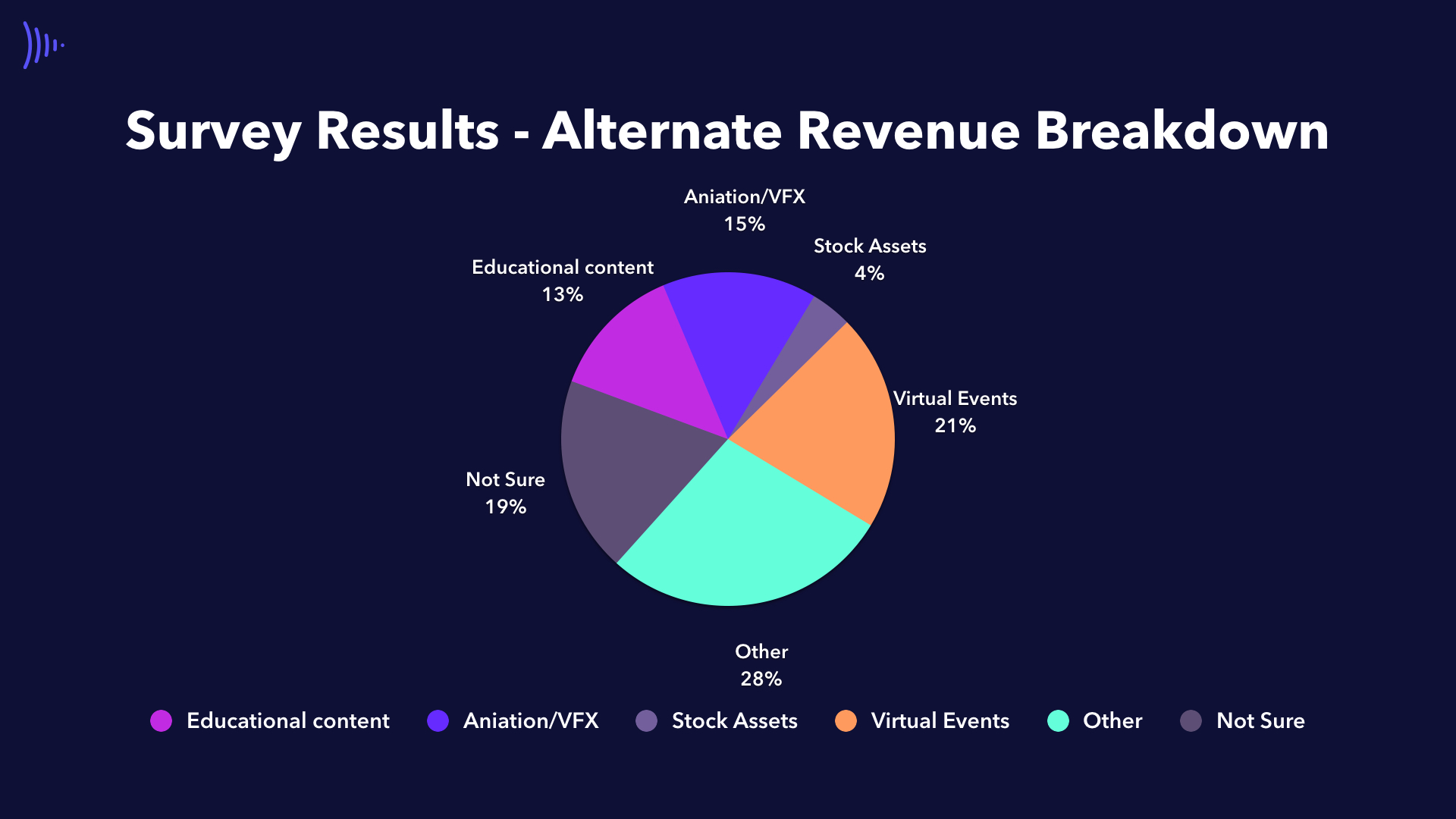
Obviously, there’s no single direction for adding new revenue streams to your business. It always depends on your (and your team’s) expertise and skillsets. But seeing how others are adapting might help you formulate new ideas.
And, as many of our respondents shared, these new opportunities can turn into long term areas of growth for their business. Remote workflows don’t just free us from working in an office, they open us up to entirely new markets.
What we’re doing
These four aspects of remote work are exactly what we’ve been building toward since day one.
We’ve been working hard to identify best practices, new remote workflows, and innovative technologies to empower you in the remote era.
We’ve been listening to the concerns of our customers, and are doing everything we can to help immediately.
To help video teams with remote project and asset management, we’ve offered 2TB of additional cloud storage to existing customers. And because we care about the future of the creative industry and the stories of those in need around the world, we’ve made Frame.io available for free to all schools and nonprofits impacted by COVID-19.
We’re also building new relationships with key industry groups to help connect creatives and enable new types of cross pollination for the brilliant minds across our industry.
And, as always, we’ll keep focusing on where the industry is heading, by producing practical, tactical resources for video professionals. Our new Workflow From Home series is the first step in our effort to help creative teams step into the cloud era, and we’ll follow with more articles, guides, and tutorials.
What you can do
For many of us, these events have already exposed significant vulnerabilities in our workflows and business processes.
And while it’s less than ideal to have to work reactively, as an industry we sometimes have to just plunge in and trust that what some of us have been developing and testing as early adopters actually can provide solutions.
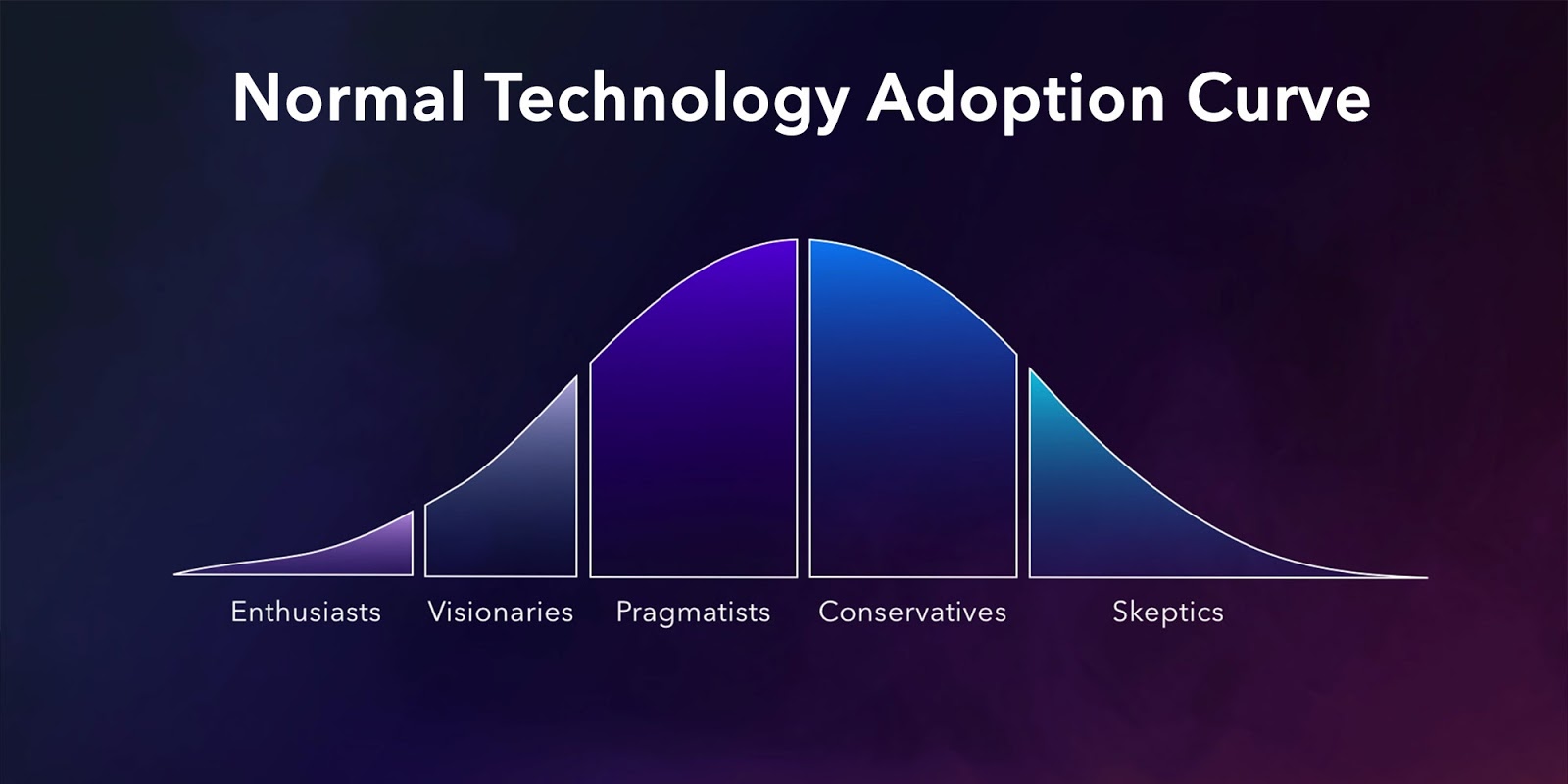
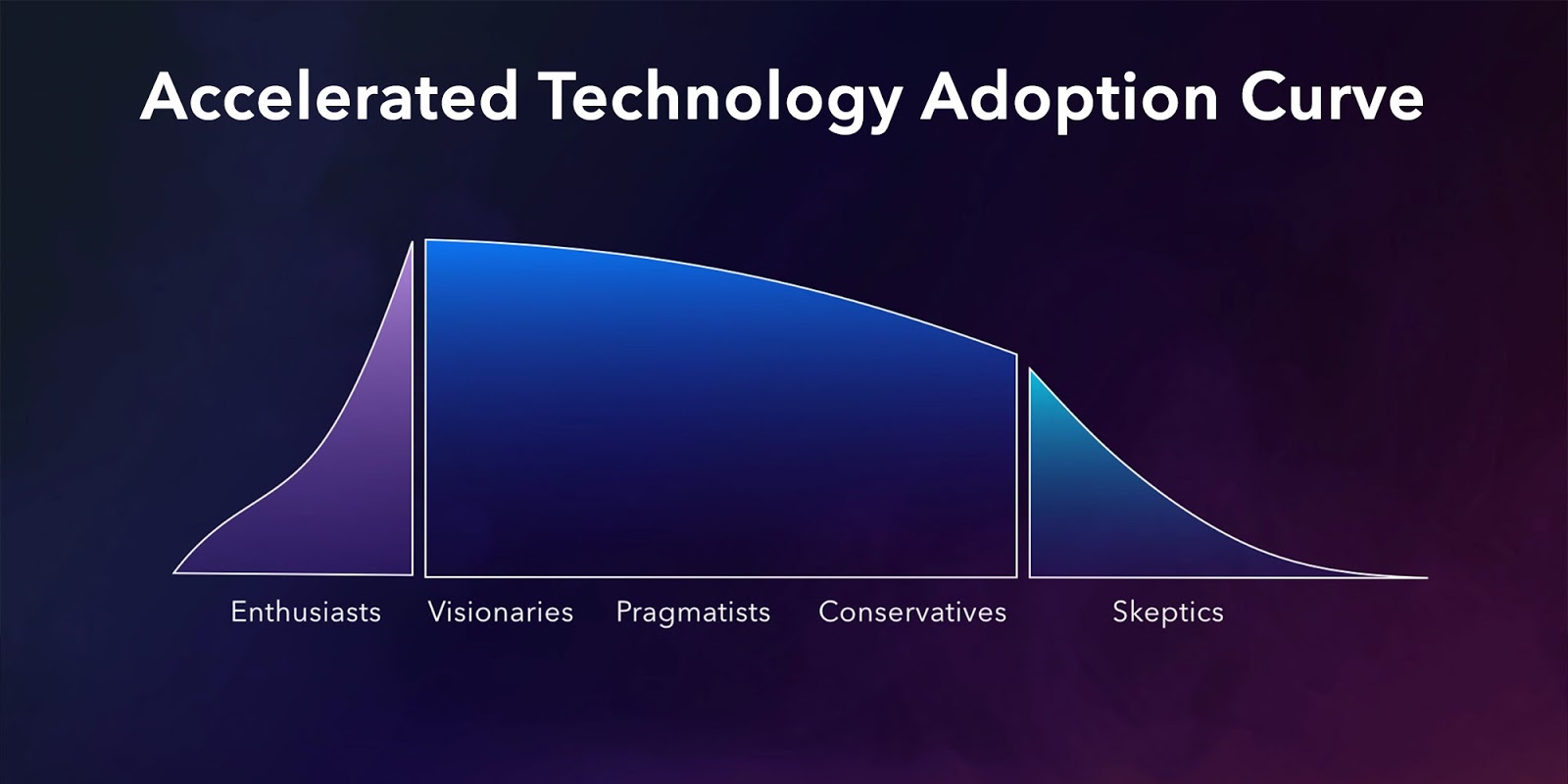
In other words, the conservatives and skeptics (whose presence we always welcome, because you’re the ones who help push us further!) may need to take the lead of the visionaries and accelerate their adoption of newer technologies in order to get up and running.
What does this mean for the industry
First and foremost, the industry has to embrace the idea that we truly are all in this together, and building a greater sense of community is what will help us all survive—and thrive. Sharing knowledge, techniques, and discoveries is good for everyone, and generosity helps form enduring bonds and future partnerships—creative and otherwise.
That said, in the immediate future the industry as a whole needs to take a close look at what we’re learning from the vulnerabilities that have become apparent. The idea that an air-gapped workflow with on-premises, centralized storage provides the greatest possible security is one idea that needs to be reconsidered.
The ability to work securely with a cloud-based workflow is here, and can not only help us in the present, but as the industry reexamines how we work in the future.
By leveraging cloud-based workflows, not only do we open ourselves to new and fruitful partnerships, we allow creatives to potentially work more comfortably, affordably, and efficiently. It may no longer be necessary for creatives to chase employment by moving across the globe for projects.
In an industry known for grueling hours, remote workflows may help restore a work-life balance.
Finally, seismic shifts in the way industries conduct business-as-usual lead to innovation. As our new normal evolves, the current studio system that supports a handful of known filmmakers who draw big crowds to the box office may make way for more variety.
We could see new and better opportunities for independent creators, including groups that have previously been under-represented by the large studios.
Sure, it’s going to take some doing to get through this time of uncertainty. But nothing sparks creativity like adversity. So let’s keep looking forward, together, as we approach a more creative future.

